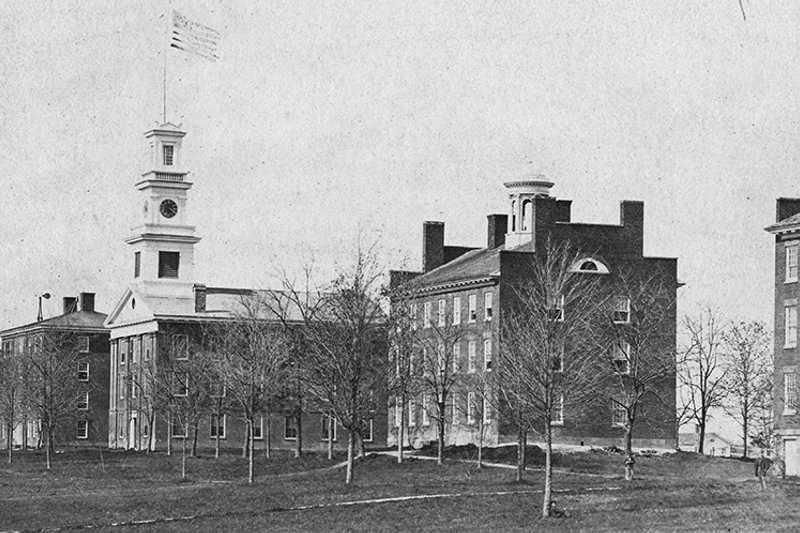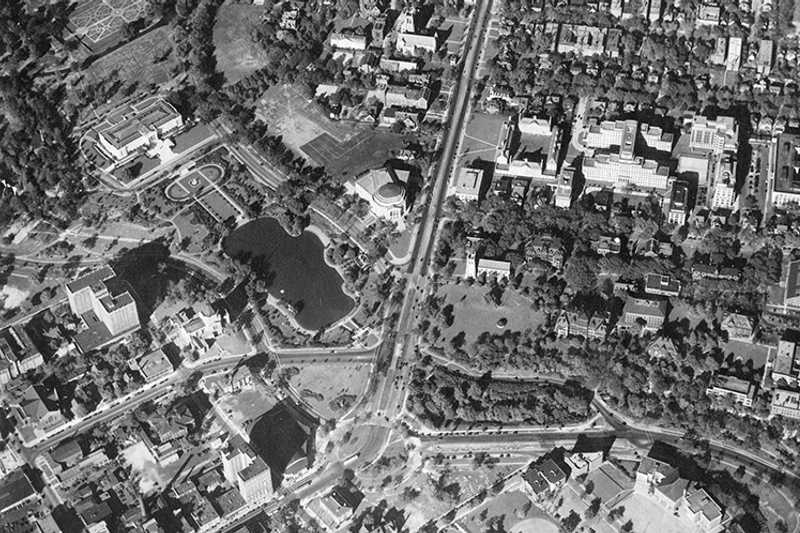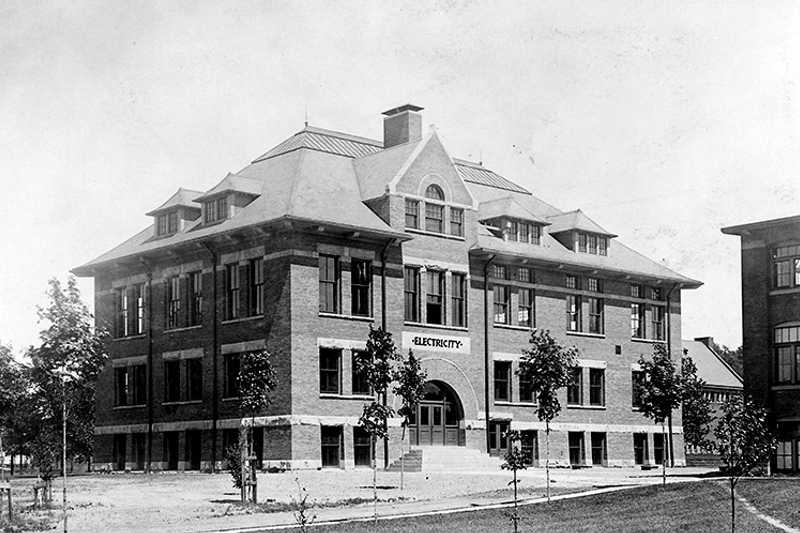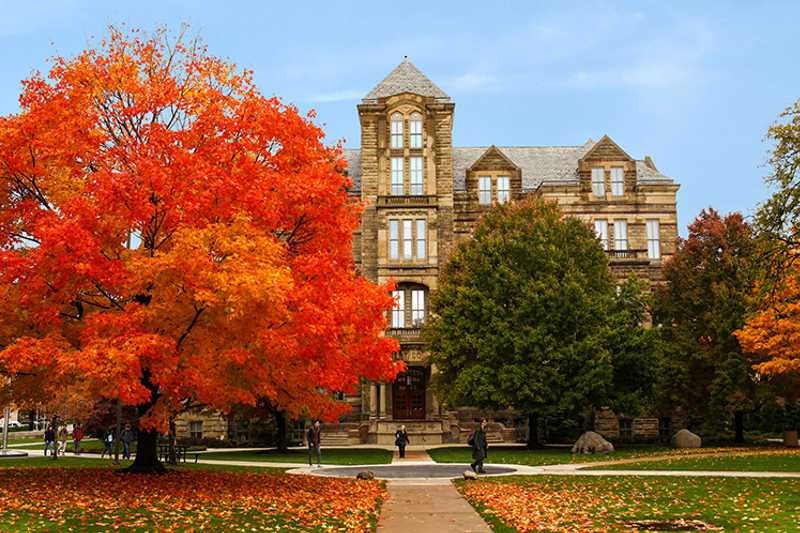
History
From the founding of Western Reserve College and Case School of Applied Science to the federation of the two institutions, and the mergers of many schools along the way, there’s much to know about how Case Western Reserve became the leading research university it is today.
Western Reserve’s Founding
Western Reserve College was founded in 1826 in Hudson, Ohio, about 30 miles southeast of Cleveland. The college—the first in northern Ohio—took its name from the surrounding region (known at that time as the Western Reserve of Connecticut). Yet it stood out in the mid- and late-19th century as one of only a few institutions that sought innovation and embraced the sciences.
As the 20th century approached, a newly thriving economy had led to unprecedented population and financial growth in Cleveland. The progress made the city hungry for a university. With funding from American industrialist Amasa Stone, the college moved in 1882 to “uptown” Cleveland, where it lives today, and assumed the name Western Reserve University.
The Case Story
The new university wouldn’t occupy this stretch of Euclid Avenue alone. Five years before Western Reserve’s big move, attorney and philanthropist Leonard Case Jr. had initiated a secret trust to endow a polytechnic school in Cleveland. This school would train men in engineering, sciences, mining, metallurgy and more. Just months after his death in 1880, the Case School of Applied Science was born.
Classes initially were held in the Case family’s downtown Cleveland home until a provision to Stone’s gift—that Western Reserve University and the Case School of Applied Science occupy adjoining campuses—led to the school’s relocation in 1885 after a committee for the two institutions raised funds for the land—and landowners Cordelia Ford and Liberty Holden sold a 43-acre parcel at a substantial discount. Funds for the land, however, had to be raised by the community.
A committee for the two institutions raised $119,400 from 56 donors by March 1881. A land purchase discount from Cordelia Ford and Liberty E. Holden, whose 43-acre property formed the early campus, netted $33,000.

The Federation of Case Western Reserve University
The joint land purchase was the first of many collaborations between Western Reserve University and the Case School of Applied Science. Over the years, the university developed strong liberal arts and professional programs, while the applied science school, which adopted the name Case Institute of Technology in 1947, became a leading school of science and engineering.
By the mid-1960s, the two institutions’ leaders began to recognize the substantial benefits of becoming a single institution. After extensive study and discussion, the boards approved federation. On July 1, 1967, Case Western Reserve University became an official entity—although the full process of integration took another quarter-century to finish.
Modern-Day CWRU
Today, Case Western Reserve boasts strong partnerships across Cleveland that benefit our students and the city. For example: Health sciences students get hands-on experience caring for community members through clinical experiences at Cleveland Clinic, Louis Stokes VA Medical Center, MetroHealth Medical Center and University Hospitals, and art history students take classes and contribute to the understanding of works at Cleveland Museum of Art.
Historic Highlights
Remarkable moments happen nearly every day on our campus. But with almost 200 years of history, it’s impossible to mark them all. Here are a few defining moments you should know:
1826 - Founding of Western Reserve College in Hudson, Ohio
1843 - Cleveland Medical College established, then renamed the Medical Department of Western Reserve College in 1844; in 1913, the medical department is renamed the School of Medicine
1880 - Founding of the Case School of Applied Science
1888 - Western Reserve University establishes College for Women, which becomes the Flora Stone Mather College for Women in 1931
1891 - Founding of Western Reserve University's School of Law
1892 - Western Reserve University creates Department of Dental Medicine; later renamed the School of Dental Medicine
1915 - Western Reserve University establishes School of Applied Social Sciences, which becomes the Mandel School of Applied Social Sciences in 1988, and the Jack, Joseph and Morton Mandel School of Applied Social Sciences in 2012
1923 - Creation of the School of Nursing at Western Reserve University, which becomes the Frances Payne Bolton School of Nursing in 1935
1925 - Cleveland College is established
1947 - Case School of Applied Science becomes Case Institute of Technology
1952 - Western Reserve University creates a School of Business
1967 - Case Institute of Technology and Western Reserve University federate, creating Case Western Reserve University; through the federation, CWRU establishes a School of Management (which becomes Weatherhead School of Management in 1980), School of Graduate Studies and School of Engineering
1971 - Adelbert, Flora Stone Mather and Cleveland colleges consolidate; become Western Reserve College in 1973
1992 - Case School of Engineering and College of Arts and Sciences established
2002 - Cleveland Clinic Lerner College of Medicine of Case Western Reserve University School of Medicine opens, providing full tuition for admitted students
2019 - Opening of the Health Education Campus of Case Western Reserve University and Cleveland Clinic, including a new Dental Clinic
A History of Leaders
Case Western Reserve University and its predecessor institutions have been led by presidents who have made significant impacts on the schools and our city. See who’s been at the helm.
Western Reserve University
Charles B. Storrs (1830-1833)
George E. Pierce (1834-1855)
Henry L. Hitchcock (1855-1871)
Carroll Cutler (1871-1886)
Hiram C. Haydn (1887-1890)
Charles F. Thwing (1890-1921)
James D. Williamson (1921-1923)
Robert E. Vinson (1923-1933)
Winfred G. Leutner (1933-1949)
John S. Millis (1949-1967)
Case School of Applied Science/Case Institute of Technology
Cady Staley (1886-1902)
Charles S. Howe (1902-1929)
William E. Wickenden (1929-1947)
T. Keith Glennan (1947-1966)
Kent H. Smith (1958–1961)**
Robert W. Morse (1966-1967)
**Acting President
Case Western Reserve University
Robert W. Morse (1967-1970)
Louis A. Toepfer (1970-1980)
David V. Ragone (1980-1987)
Agnar Pytte (1987-1999)
David H. Auston (1999-2001)
James W. Wagner (2001-2002)*
Edward M. Hundert (2002-2006)
Gregory L. Eastwood (2006-2007)*
Barbara R. Snyder (2007-2020)
Scott Cowen (2020-2021)*
Eric W. Kaler (2021-present)
*Interim President




